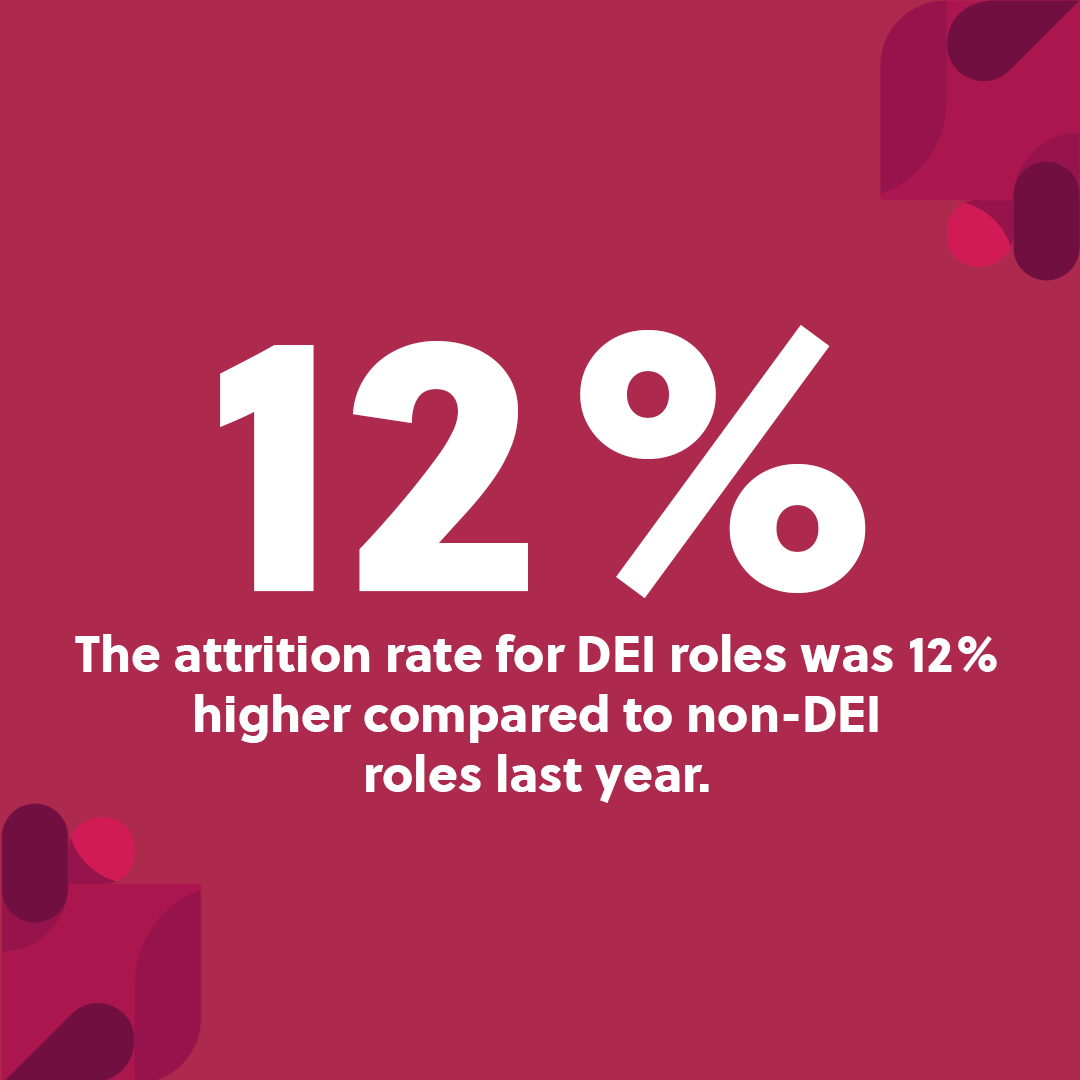Whilst many businesses are hoping to increase their emphasis on employee wellbeing and mental health support, Diversity, Equity & Inclusion roles are on the decline…
Our HR Director Hollie Thomas looks at the impact that putting DE&I on the backburner will have on overall employee wellbeing.
“Off the back of Mental Health Awareness Week, there was a plethora of content being shared by employees and employers alike, sharing messages of support for those affected by mental health issues as well as tips and advice for managing wellbeing and reducing the risk of workplace-related burnout.
However, as much as these awareness weeks provide a valuable catalyst for conversation, the brevity of the period for conversation can mean that these debates remain surface-level. Equally, there seems to be a worrying trend of ‘wellbeing washing’ (the practice of firms supporting mental health publicly but not supporting the workforce internally) which emerges off the back of these awareness campaigns. In fact, research carried out by Claro Wellbeing found that while 71% of workplaces celebrated mental health awareness days, only a third (36%) of organisations’ mental health support was deemed good or outstanding by their employees.
This data highlights that more work needs to be done by employers to truly decipher the effectiveness (or ineffectiveness) of the strategies they have in place; namely, are these policies inclusive enough? Data from Mind has highlighted that some groups are more likely to experience mental health problems:

- People who identify as LGBTQIA+. LGBTQIA+ people are between 2–3 times more likely than heterosexual people to report having a mental health problem in England [5].
- Black or Black British people. 23% of Black or Black British people will experience a common mental health problem in any given week. This compares to 17% of White British people [2].
- Young women aged 16-24. Over a quarter (26%) of young women aged between 16–24 years old report having a common mental health problem in any given week. This compares to 17% of adults. And this number has been going up [2].
- Around 40% of people in England who have overlapping problems including homelessness, substance misuse and contact with the criminal justice system in any given year also have a mental health problem [6]. (This is sometimes called facing ‘multiple disadvantage’.)

The link between Diversity & Wellbeing
Given that, although your identity does not cause mental health problems, mental health problems disproportionately affect these groups, it is therefore impossible to ignore the link between the presence of DE&I and wellbeing within the workplace. However, in spite of this, the presence of DE&I roles is starting to decline: in 2021, hiring of chief diversity and inclusion officers soared 111% (as a share of all hires) during the 12-month period. Now, in 2022, hiring for the title dropped by 4.5%. Equally, Revelio Labs research found that “DEI roles are diminishing at a faster pace than non-DEI roles, beginning in 2021 and continuing to accelerate during layoffs in 2022, and that over 300 DEI professionals have left from companies that have experienced recent layoffs, sometimes amounting to the exodus of entire diversity teams.” A possible cause of this peak in demand for DE&I roles, and then the resulting drop, could be the impact of the pandemic, when the Black Lives Matter movement was at its peak. Globally, many companies were quick to invest in DE&I and make hires as somewhat of a knee-jerk reaction without fully considering or defining how those roles would look going forward long-term, and how the business would incorporate strategies going forward. Now, with these hires being let go at a worrying rate, it appears that some businesses hires were performative.

The knock-on effect of these changes cannot be underestimated. Already, we are seeing a dip in access to diversity programmes and, naturally, companies with DEI teams tend to have more diverse hires, as well as higher employee satisfaction. This is inextricably linked with fostering a positive and inclusive wellbeing culture that allows employees to thrive, and employee mental health is closely linked to experiences of inclusion in the workforce.
The bottom line?
The reality is that, as the groups that are most at risk of developing mental health problems, and are most likely to experience feelings of exclusion within the workplace, supporting these minority groups should be a priority. Equally, giving these groups the same exposure and opportunities as more represented groups is key to the progression and success of a business. The mass removal of these DE&I positions (particularly within larger businesses) is also removing the opportunity for businesses to educate themselves and begin to understand the everyday difficulties posed within and outside of work for minority groups, which thus lessens the resource to look after and care for their wellbeing from a personal and professional perspective. Not to mention, the blatant argument that these redundancies send the clear message that DE&I and minority groups no longer need to be invested in, or that it’s not something that needs to be prioritised.
Whether through training or hiring, it’s crucial that businesses need to think long-term about their investment in both Wellbeing and DE&I. Times of economic uncertainty will naturally result in an increase in redundancies, but the knock-on effect of cutting these roles should not be underestimated. Businesses must begin by addressing Diversity, Equity & Inclusion within their workforce alongside their wellbeing strategies if they want to build a strategy that will stick.”